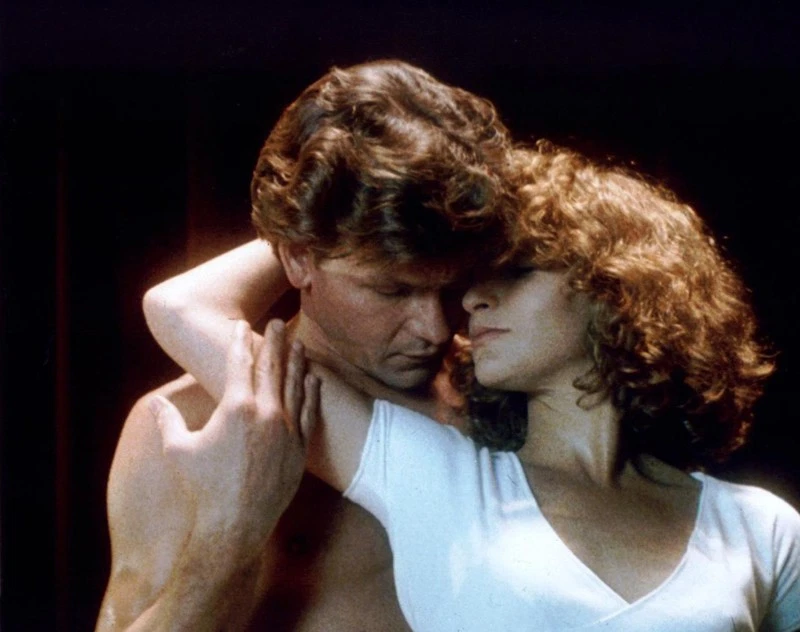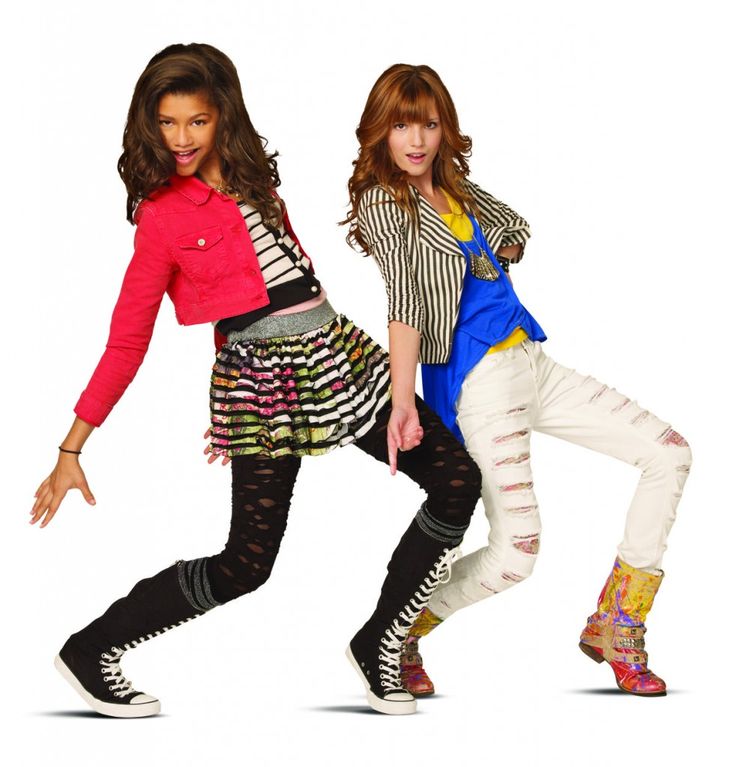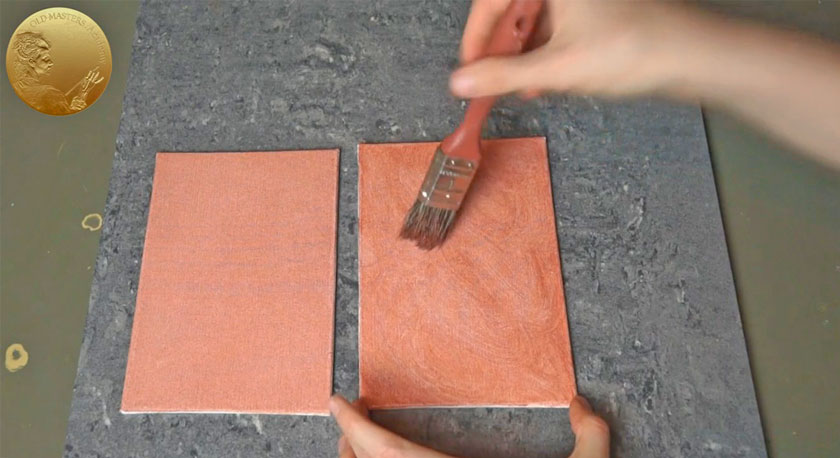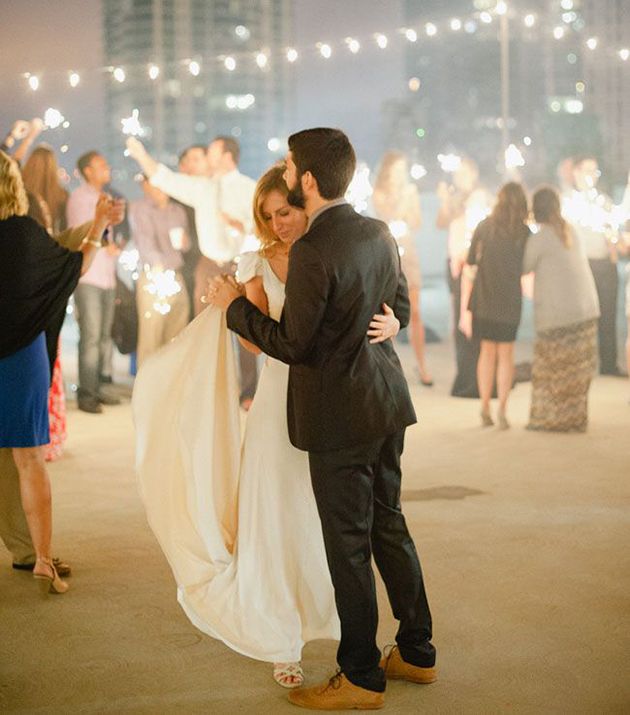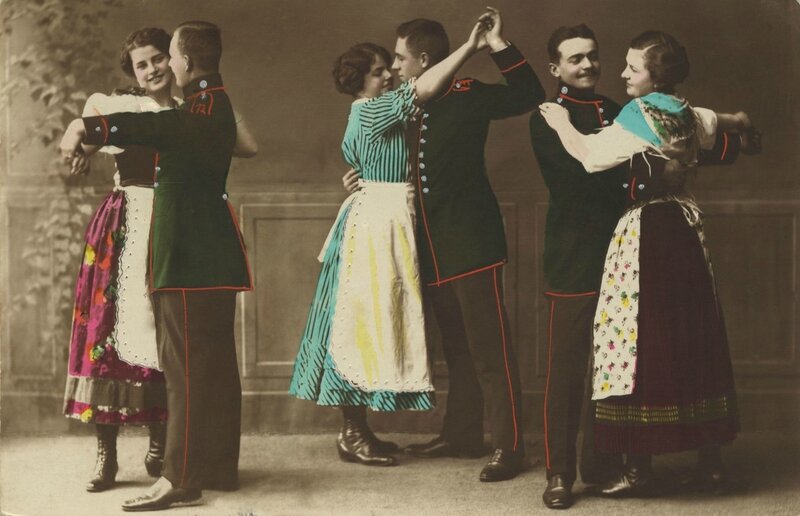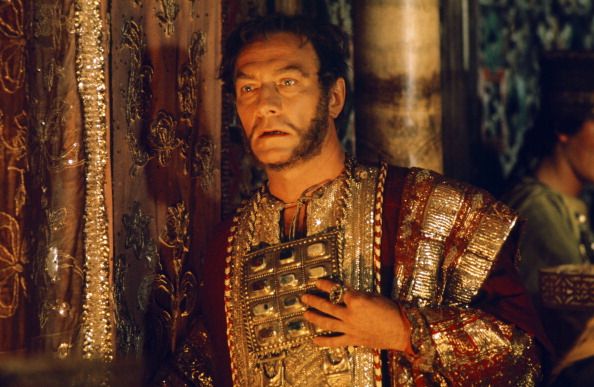How does dirty dancing end
How Does The Original 'Dirty Dancing' End? The ABC Remake Took Some Liberties
Entertainment
Guy D’Alema/ABC
by Megan Walsh
The ABC remake of Dirty Dancing made more than a few changes to the classic story: scenes were shifted around, musical interludes were added, and characterization was tweaked (I don't recall Lisa being that adorable, personally). But the biggest change was probably the ending. A flashforward to Baby and Johnny's future revealed him to be a Broadway star in a show based on their summer romance, while Baby was a married mom. They weren't together anymore and it seemed like they hadn't seen each other in years. For fans of the original, it was definitely unfamiliar, but those who haven't seen the 1987 movie in a while might be wondering: how does the original Dirty Dancing end?
The original film is known for its open ending. After Johnny appears at the end-of-season talent show and takes Baby for a spin on the dance floor, the entire room erupts into choreography. It's a joyful ending that sees every character letting loose and having fun despite their differences and past problems. The movie ends there without delving into what happens after the summer is over. It doesn't answer any questions about whether or not Baby and Johnny stay together or what they do with their separate futures. It allows fans to finish the story for themselves.
Over the years, fans may have debated what happened to Baby and Johnny after the credits rolled, but part of the point was that it didn't really matter. Dirty Dancing was a coming-of-age story about one magical summer in Baby's life, so it made sense for the film to start and end in that summer without following up later. The important thing was that Baby and Johnny both changed for the good because of their love for one another. Does it really enhance the story to know that he got a good job and she settled down?
A deleted scene from the original film makes it clear that the movie did intend to leave things on a more definite note, though it didn't go far into the future to do so. In the scene, Baby and Johnny have a conversation about their future during the final dance. She confesses her anxieties about the trouble they'll have staying together in the future and he reassures her that they'll fight to be with one another no matter what. The scene confirms that they'll try to stay together instead of parting ways after the summer, but considering it was deleted without the final film suffering for it, it doesn't seem like it was necessary.
In the scene, Baby and Johnny have a conversation about their future during the final dance. She confesses her anxieties about the trouble they'll have staying together in the future and he reassures her that they'll fight to be with one another no matter what. The scene confirms that they'll try to stay together instead of parting ways after the summer, but considering it was deleted without the final film suffering for it, it doesn't seem like it was necessary.
Much of the ABC remake of Dirty Dancing embellished and elaborated on things that didn't really need the added clarification. Finding out where the future took Baby and Johnny is fine, but it kind of misses the point.
Dirty Dancing What's Up With the Ending?
Dirty Dancing What's Up With the Ending? | ShmoopThe store will not work correctly in the case when cookies are disabled.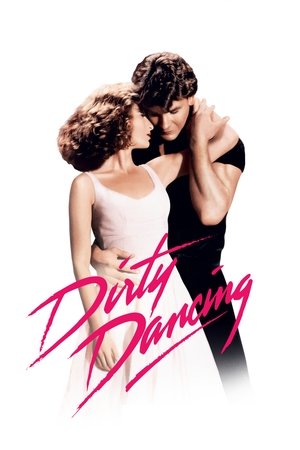
JavaScript seems to be disabled in your browser. For the best experience on our site, be sure to turn on Javascript in your browser.
Previous NextWhat's Up With the Ending?
The Time of Their Lives
The Kellerman's talent show is like the worst episode of America's Got Talent. Actually, no. A bad episode of that show is entertaining. The Kellerman's talent show is like the cutting room floor. The stuff that even Howard Stern doesn't think is funny.
That's why it's a good thing Johnny Castle storms in, snatches Baby from the corner (see our "Symbols section for more about the corner), and puts on a show-stopping number.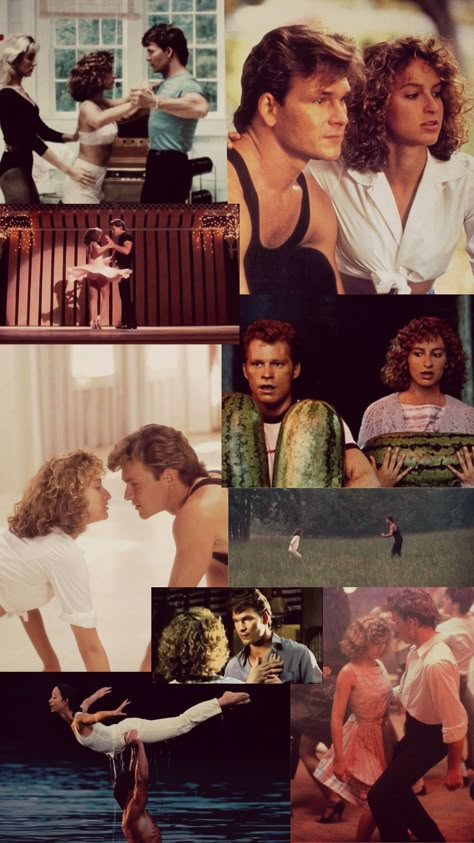 Here's what he says before taking the stage.
Here's what he says before taking the stage.
JOHNNY: Sorry for the disruption, folks, but I always do the last dance of the season. This year somebody told me not to. So I'm gonna do my kind of dancing with a great partner, who's not only a terrific dancer, but somebody who's taught me that there are people willing to stand up for other people no matter what it costs them. Somebody who's taught me about the kind of person I want to be. Miss Frances Houseman.
Cue the Academy Award-winning "(I've Had) The Time of My Life" song. The title of the song is a little misleading, though, because both Baby and Johnny have had the times of their lives. Remember: the song's a duet. Johnny changed Baby's life by teaching her to dance, and he's able to show off that talent during the final number. But his speech isn't about himself. It's about how she changed him. Johnny may have taught Baby to dance, but Baby teaches Johnny to take risks and to live.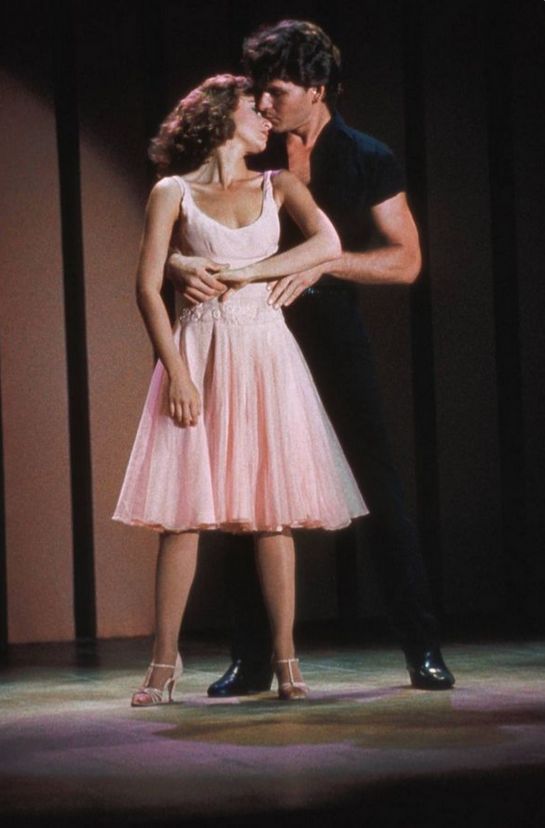
Because each person had a life-changing effect on the other, they now trust one another enough to do the lift. And it's even more dramatic than it was when they learned it in the lake. Baby jumps off the stage, runs towards Johnny, and they do the lift in the middle of the audience. Their relationship—forbidden both by Johnny's employer and Baby's father—is no longer a secret to anyone. And they seal it with a kiss.
Previous NextMore on Dirty Dancing Navigation
This is a premium product
Unlock these features
Tired of ads?
Join today and never see them again.
Get started
Please Wait...
Dirty Dancing movie plot read online
- home /
- New /
- Dirty Dancing
- Details
- Parent Category: Movies
- Posted: April 29, 1987
A romantic story about a girl of wealthy parents who was so captivated by the beauty of dancing by a professional couple at the hotel where she was vacationing, that, against the wishes of her parents, she began to learn dancing herself, sharing with her partner all the passion she possessed. Of course, such an impulse must overcome a lot of obstacles.
Summer 1963. Frances Houseman (parents named their daughter in honor of Frances Perkins - the first woman in the US Cabinet), nicknamed "Baby", a seventeen-year-old girl from a wealthy family, comes with her parents and older sister Lisa for the holidays at Max Kellerman's boarding house. Baby plans to study developing country economics at Mount Holyoke College and work for the Peace Corps after graduation.
Baby plans to study developing country economics at Mount Holyoke College and work for the Peace Corps after graduation.
In the evening, Baby's attention is attracted by the performance of a dancing couple hired to amuse the wealthy guests of the boarding house. Then she accidentally ends up at a staff party, where dances are performed that you will not see in the guest buildings. Soon the same couple appears, and Baby meets Johnny Castle, a professional dancer, whom she noticed in the dance hall. But Johnny is unhappy with her presence, since the guests of the boarding house do not belong at such parties.
The next evening, Baby finds out that Penny, Johnny's dance partner, is pregnant by waiter Robbie, who has already started an affair with Lisa, her older sister. Penny has a problem: she is forced to have an abortion, but she has no money. Johnny, who is on friendly terms with Penny, is trying to find a way out of the situation. Baby offers to help her by asking her father for money, but not telling him what it will be used for.
The doctor's visit falls on the day Johnny and Penny have a performance at a nearby hotel. Penny supports the idea of sending Baby in her place and takes the time left to teach her how to dance. Baby begins to rehearse with Johnny, and sympathy develops between the young people.
Performance at the Sheldrake Hotel going well. But upon their return, they learn that Penny's clandestine abortion was performed unprofessionally, and Baby is forced to turn to her father for medical help. Dr. Houseman decides that Penny was pregnant by Johnny and forbids her daughter to communicate with him and his friends. Baby goes to Johnny's cottage to ask for forgiveness for his father, and the night ends with a love scene. Johnny, seeing sincere sympathy for himself, tells Baby how difficult it is for a poor dancer to maintain human dignity among people who look at him as a temporary entertainment.
One of the wealthy guests of the hotel, Johnny's ex-lover, rejected by him because of Baby, makes Johnny accuse of stealing the guest's wallet.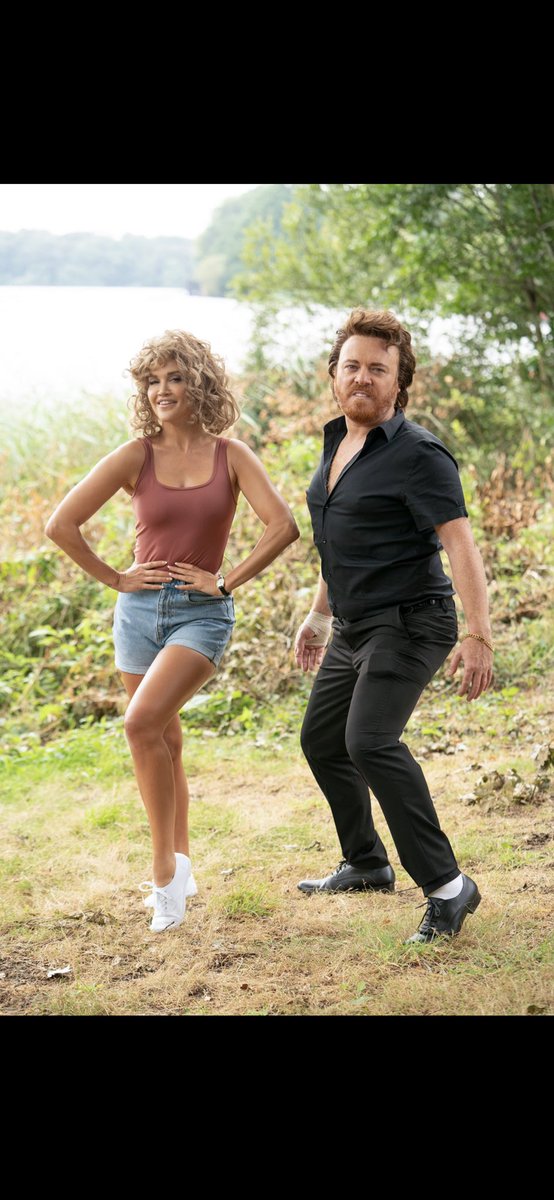 Johnny is about to be fired. To help her beloved, Baby is forced to confess that she spent that ill-fated night with him. But Johnny is still fired for violating boarding house rules. He has to leave without performing the farewell dance of the season. Saying goodbye to Baby, Johnny tells her that he has no regrets.
Johnny is about to be fired. To help her beloved, Baby is forced to confess that she spent that ill-fated night with him. But Johnny is still fired for violating boarding house rules. He has to leave without performing the farewell dance of the season. Saying goodbye to Baby, Johnny tells her that he has no regrets.
At the climax of the film, Johnny, interrupting the concert program, goes on stage to perform the final dance of the season despite the ban, but with Baby. After a short speech, Johnny and Baby dance triumphantly to "(I've Had) The Time of My Life" and end with a support that Baby has never been able to do before. Dr. Houseman, having learned from Robbie who accidentally let slip who was the true culprit of Penny's pregnancy, apologizes to Johnny for his unfair accusation. The film ends with a continuation of the dance, where everyone - both the guests of the boarding house and the staff - dance together.
Favorite movie.
America in the early 1960s. A high school student nicknamed Baby, who came to the resort with her parents, starts an affair with a young dance teacher. They rehearse a performance on a show for tourists together, but the girl's parents forbid her to communicate with the guy, since he is lower than her in social status and because they mistakenly believe that the dancer's previous partner had to have an abortion because of him. In the end, the guy is fired, and he has to leave the resort. However, on the day of the scheduled performance, he suddenly returns, enters the hall where the performance has already begun, and sees that his beloved is sitting at a table in the corner, “locked” by her parents on both sides. The hero throws them: “The baby cannot be driven into a corner,” and then takes the girl by the hand and takes her to the stage to dance the prepared number.
The 1980s in mainstream Hollywood was the age of "male" cinema. Action, thrillers, sci-fi, fantasy… Even the romantic films of that time were often intended primarily for male eyes, connecting not-so-handsome men with the most attractive women.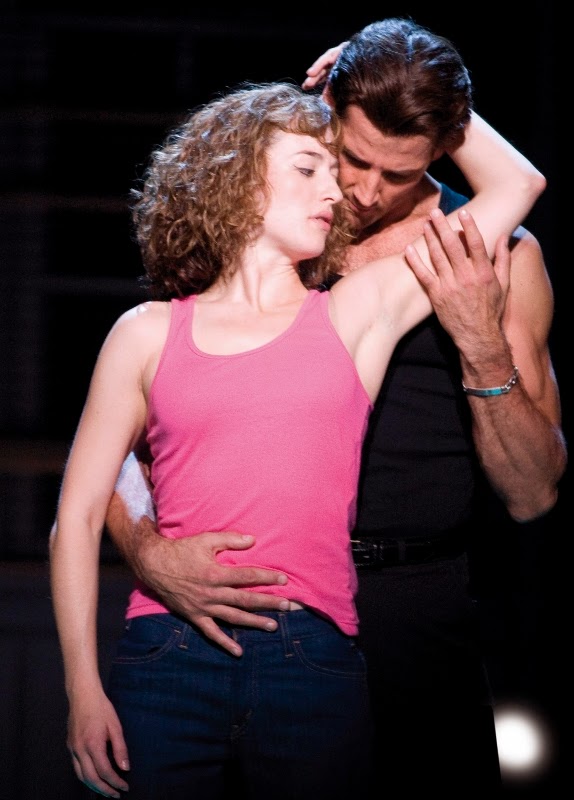.jpg) However, there were striking exceptions to this rule, and one of them was released in 1987. There was not even a hint of a male point of view in this romantic drama - she looked at the world only through female eyes. And this made it a long-term, still popular hit. This wonderful picture was called "Dirty Dancing".
However, there were striking exceptions to this rule, and one of them was released in 1987. There was not even a hint of a male point of view in this romantic drama - she looked at the world only through female eyes. And this made it a long-term, still popular hit. This wonderful picture was called "Dirty Dancing".
Writer and screenwriter Eleanor Bergstein has always loved to dance, especially as a young girl, when her wealthy parents took her and her sister to the fashionable resorts in the Catskill Mountains of New York State in the 1950s and 1960s. While the "ancestors" played golf, the girl danced until she dropped. She was the "queen of mambo", participated in dance competitions, and later, while studying at the university, worked as a dance teacher. So when she started writing professionally in the 1970s, she included in her first producer-purchased script, the romantic tragicomedy Now My Turn, an erotic dance scene between the two protagonists.
The 1980 film, however, did not include this scene. The producers considered it superfluous and threw it out of the text. It was a painful but important lesson: "If you want something in your script to survive, make it an integral part of the story." And Bergstein decided to dedicate her new script entirely to dancing - as well as illegal abortions.
The producers considered it superfluous and threw it out of the text. It was a painful but important lesson: "If you want something in your script to survive, make it an integral part of the story." And Bergstein decided to dedicate her new script entirely to dancing - as well as illegal abortions.
What did abortion have to do with it? Despite the fact that abortion was fully legalized throughout the United States only in 1973, as a result of the decision of the Supreme Court of the country in the case of Roe v. Wade. This decision was an example of so-called "judicial activism" - reshaping US laws not in accordance with the opinion of the people or their elected representatives, but in accordance with the position of appointed judicial officials. Therefore, the Roe v. Wade case immediately became one of the main stumbling blocks in American politics, and conservatives are still aggressively fighting to overturn it.
As a committed (though not radical) feminist, Bergstein did not want this.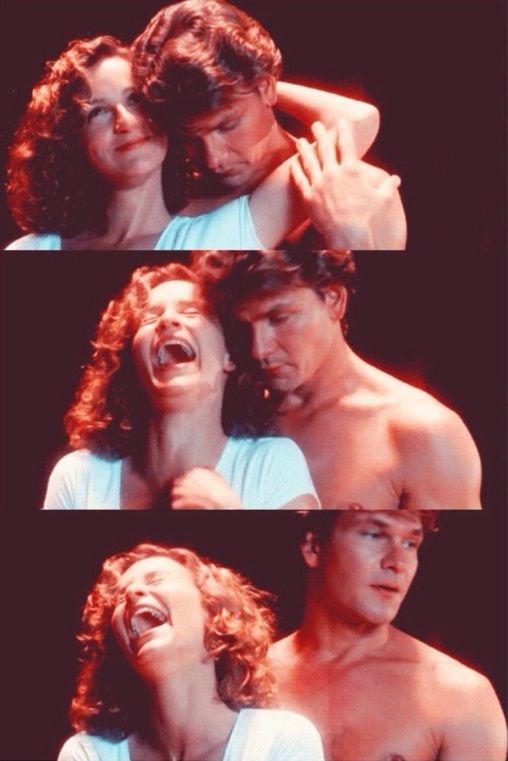 She well remembered the days of clandestine, often home abortions, often ending in tragedy. However, she did not intend to write a dark moral story that would only arouse the interest of those who did not need to be convinced of the justice of Roe v. Wade. So she decided to write a historical romantic tragicomedy, where the plot would revolve around passionate dancing, but would be driven by the events associated with clandestine abortion. As a result, the picture was supposed to turn out to be beautiful and loving enough to interest the public, and then through a secondary, but key storyline for the story, “slip” into the heads of the audience the idea that abortion should in no case be banned.
She well remembered the days of clandestine, often home abortions, often ending in tragedy. However, she did not intend to write a dark moral story that would only arouse the interest of those who did not need to be convinced of the justice of Roe v. Wade. So she decided to write a historical romantic tragicomedy, where the plot would revolve around passionate dancing, but would be driven by the events associated with clandestine abortion. As a result, the picture was supposed to turn out to be beautiful and loving enough to interest the public, and then through a secondary, but key storyline for the story, “slip” into the heads of the audience the idea that abortion should in no case be banned.
This is how the script was born, which received the quite natural name "Dirty Dancing" (as in the early 1960s, rock and roll, which was very frank at that time, was called). Its main character, Frances Houseman, was partly autobiographical—a naive, idealistic girl from a wealthy Jewish family who loves dancing and sighs for an attractive instructor who reciprocates her feelings.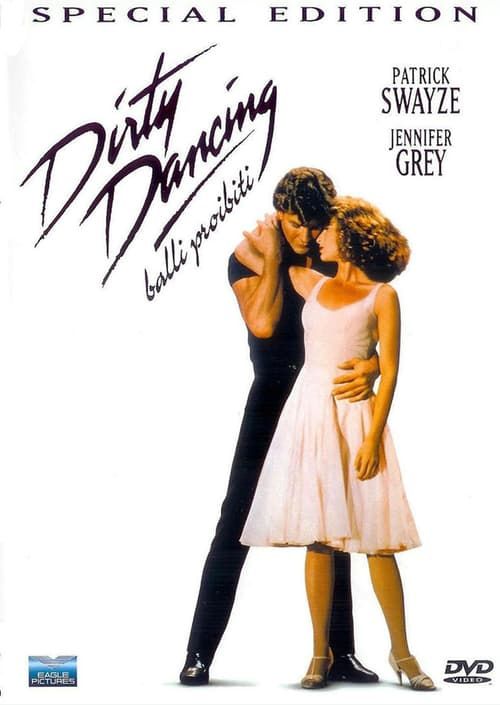 Eleanor borrowed the name of the girl from her sister, but the family nickname Baby belonged to the screenwriter herself. The prototype of the protagonist was Michael Terrance (real name - Michael Gutierrez), a prominent Broadway dancer and choreographer who once worked as a dance teacher in the Catskills and was among the first American popularizers of mambo, a dance style that was born in Cuba in 1940s and came to the US through Mexico.
Eleanor borrowed the name of the girl from her sister, but the family nickname Baby belonged to the screenwriter herself. The prototype of the protagonist was Michael Terrance (real name - Michael Gutierrez), a prominent Broadway dancer and choreographer who once worked as a dance teacher in the Catskills and was among the first American popularizers of mambo, a dance style that was born in Cuba in 1940s and came to the US through Mexico.
In the course of the action, the permanent dance partner of the instructor had an underground abortion, which ended unsuccessfully, and the girl was deprived of the opportunity to dance for a long time, which opened the way for the Kid to the stage podium and into the arms of the protagonist. Further events developed according to the classic Romeo and Juliet scenario about the love of two representatives of conflicting worlds (in this case, rich tourists and poor servants), but, in accordance with the positive Hollywood tradition, they ended with a happy ending, not a tragedy.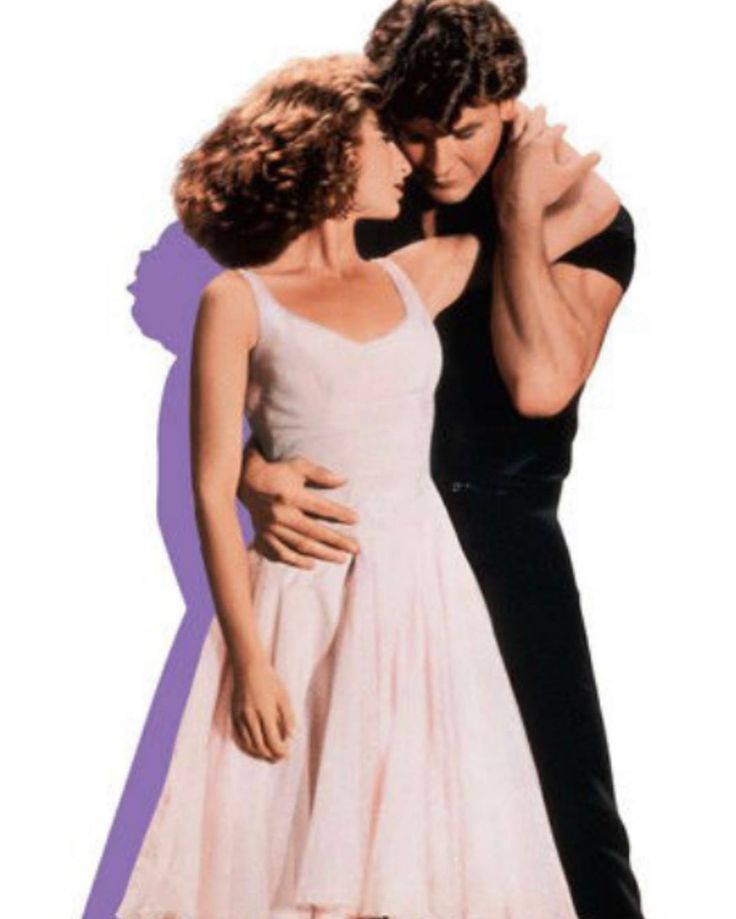
After the success of Saturday Night Fever in 1977, dance cinema in America experienced a brief but tumultuous renaissance, with hit films such as Glory, Flash Dance, and Free » (Footloose). All of these films, however, looked at dancing in terms of male passions and male experiences. So, when choosing an actress for the lead role in Flashdance, then-Paramount boss Michael Eisner ordered a survey of studio workers and find out which of the three main contenders they would prefer to “fuck”.
On the contrary, Dirty Dancing was an emphatically feminine narrative with a discussion of abortion, a fixation on the heroine's relationship with her father, and the love of a romantic handsome man and a naive "simpleton" (a classic cliché of female tabloid prose). Male producers were cold to such a movie, and the project was treading water until a high-ranking MGM employee, Eileen Misel, became interested in it. She brought Bergstein together with producer Linda Gottlieb (who actively participated in the development of the script and urged the screenwriter to use as much details from her life as possible) and tried to organize shooting at her studio, but she was soon fired, and the project again became homeless.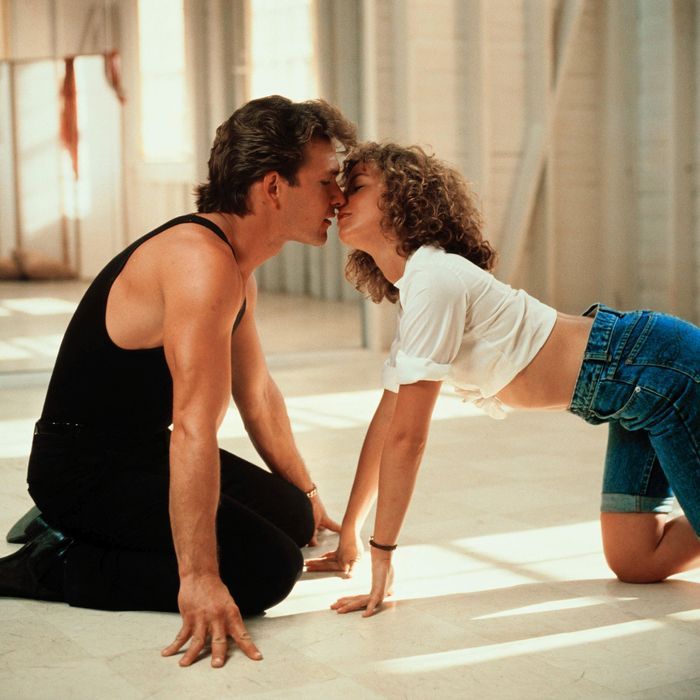
In search of a new home for the Dances, Gottlieb and Bergstein went to all the Hollywood studios and received dozens of rejections. No one wanted to make women's films, and even historical, dance and Jewish films (although the nationality of the heroine does not matter much for the action, it is still an essential script detail). Finally, Vestron, an independent studio based in Connecticut, which mainly dealt with video releases, but occasionally released films, became interested in the script. Vestron agreed to finance the film on the condition that the producers would meet $4.5 million and that the film's wide release would be very short. A week or two in the movies - and then all sales on video. Gottlieb and Bergstein had no choice, and their partners (Bergstein became a co-producer of the film) agreed to the conditions of tight-fisted Connecticutians.
By the time they signed with the studio, they already had a director. Emil Ardolino, Oscar-winner for his 1983 documentary about a dance teacher, I Want to Dance With Him, went to the producers himself and persuaded them to give him the job. Before he did not work on feature films, but he knew a lot about dancing and, thanks to his unconventional orientation, agreed with the producers that the hero of the film should be more beautiful than the heroine. The studio, by the way, objected to this, but the authors of the tape were adamant. They wanted to make a fairy tale for women, not a trivial love story between two exceptionally attractive people.
Since the prototype of the protagonist was "Latino" Michael Terrance, the producers initially looked for Johnny among actors with Mediterranean and "Latin" roots. But as soon as Bergstein saw a photo of Patrick Swayze from Red Dawn and The Outcasts and learned that he was not only a handsome actor, but also a professional dancer, she knew that Swayze needed to be hired immediately. And she was absolutely right - it's not every day you meet a Texan macho who loves women and ballet (Swayze inherited a love of dancing from his choreographer mother) and who played figure skating and American football at school. Later, the screenwriter admitted that only after meeting Swayze did she fully realize what Johnny Castle was supposed to be.
Later, the screenwriter admitted that only after meeting Swayze did she fully realize what Johnny Castle was supposed to be.
Swayze's Red Dawn co-star Jennifer Grey, also known for her supporting role in the teen comedy Ferris Bueller's Day Off, is cast as the main character. Like Swayze, Gray came from a musical family. Her father was Broadway actor and choreographer Joel Gray, Oscar winner for the musical Cabaret, and her grandfather was the prominent American-Jewish comedian Mickey Katz. From her family, the girl inherited an impressive nose, which was ideal for the role of Baby, but did not really like the actress herself. Later, she underwent plastic surgery ... and ruined her career, as she was no longer recognized and invited to audition.
It is worth noting that 26-year-old Gray and 34-year-old Swayze were ten years older than their characters, but they looked young enough that it was not conspicuous. They also did not like each other very much, as Swayze was highly professional and pedantic, and Gray was emotional and flighty, with seven Fridays a week.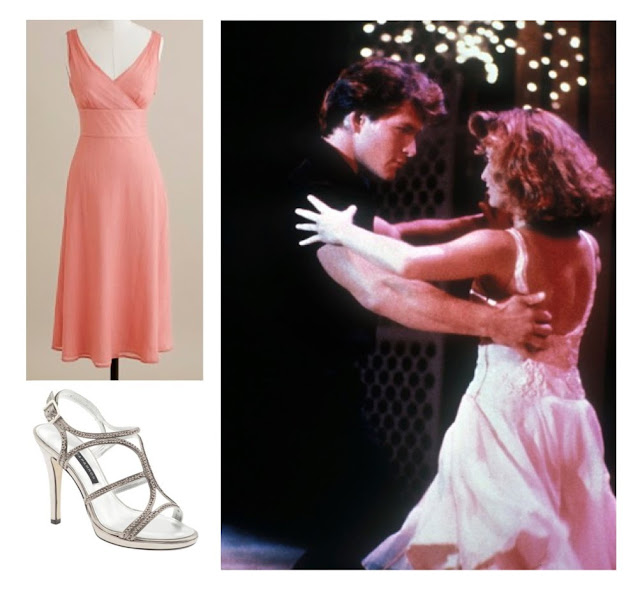 They did not like each other even during the filming of "Red Dawn", but on the screen and in the dance, this hostility miraculously turned into a romantic "spark". That's really true - from love to hate ...
They did not like each other even during the filming of "Red Dawn", but on the screen and in the dance, this hostility miraculously turned into a romantic "spark". That's really true - from love to hate ...
The father of the main character of "Dancing" was played by Broadway and theater artist Jerry Orbach, the future voice of Lumiere in Disney's "Beauty and the Beast" and detective Lenny Briscoe in the TV series "Law & Order". Animated voice actress Lynn Lipton was cast as Baby's mother, but she fell ill during the first week of filming and was replaced by Broadway artist Kelly Bishop, a future Gilmore Girls star who was originally hired to play one of the tourists at the resort. Since it was already too late to look for a replacement for her, the second choreographer Miranda Garrison took over her former role. The boss of the last and, accordingly, the main choreographer of the tape was Kenny Ortega, a student of the legendary musical star Gene Kelly, dance director in Madonna's Material Girl video and future employee of Michael Jackson and choreographer of the 2002 Olympics in Salt Lake City.
Why did all the main roles in the film go to Broadway people or professional dancers? Because Ardolino didn't want a repeat of the Flashdance scandal, where lead actress Jennifer Beals "danced" with the help of multiple stunt doubles, one of whom was a man. Coming to feature films from documentaries, the director wanted to shoot really dancing actors, and not create characters by editing and shooting in the shadows or from the back (so that faces were not visible). In addition, Broadway performers were cheaper than famous Hollywood performers and were more industrious.
When looking for filming locations, the producers quickly discovered that they could not afford to shoot in New York State, as the locally mandated contracts for unionized workers and filmmakers were too expensive for a film that was filmed at a third of the normal rate for the time. budget of $12 million. So instead of resorts in the Catskills, the picture was created at two lake resorts in Virginia and North Carolina, where there was no need to get involved with unions and where workers were much cheaper.
As if trying to punish the filmmakers for betraying New York, nature unleashed a series of weather tests on them. Filming took place in September and October 1986, and in the early days there was a heat of 40 degrees Celsius, from which members of the group, forced to work in the sun, sometimes fainted. By the end of the filming period, the temperature dropped to almost zero, which made filming the dance in the lake life-threatening (the heroes rehearse support, what to do in the water is safer than in the hall - of course, if the water is warm). Also, filmmakers suffered from heavy rains, from withered grass (to make it look like summer, it had to be painted) ... And from the desire of Patrick Swayze to do all the stunts himself, which once, after filming a dance on a log, led him to the hospital (from a series of falls he his injured knee was so swollen that he could not walk).
However, filming in the outback, away from megacities, had some advantages. The main one was that the group living and working in the resort boarding house quickly and firmly became friends. Every night Hollywood had discos, and this helped the actors to get used to the roles and identify with the characters. Swayze and Gray, however, never became friends. On the contrary, the relationship between them worsened every day, and at some point the studio was afraid that the stars would not be able to finish shooting. Fortunately, the producers managed to set the couple in the right mood, showing the actors a screen test where their relationship had not yet been hopelessly damaged.
Every night Hollywood had discos, and this helped the actors to get used to the roles and identify with the characters. Swayze and Gray, however, never became friends. On the contrary, the relationship between them worsened every day, and at some point the studio was afraid that the stars would not be able to finish shooting. Fortunately, the producers managed to set the couple in the right mood, showing the actors a screen test where their relationship had not yet been hopelessly damaged.
To immerse the band in the early 1960s, Bergstein played her favorite records during filming. When it came to composing the soundtrack, music producer Jimmy Yenner bought the rights to a number of classic hits from the writer's collection. He also arranged for the recording of several new compositions, among which was the ballad She's Like the Wind, composed and performed by Patrick Swayze. The actor wrote this song for the tragicomedy "Grenview, USA", but the composition was not useful to its director Randal Kleiser.
The picture's biggest hit (I've Had) The Time of My Life, played during the climactic dance, was composed and recorded as a demo track by former Franke and the Knockouts vocalist Frank Prewit. The film, however, did not use this version (in Swayze's opinion, the best), but a professionally mixed version performed by Bill Medley of The Righteous Brothers and solo singer Jennifer Warnes. By the way, a few years later, The Righteous Brothers' classic Unchained Melody became the biggest hit in the film Ghost, where Swayze also played the title role.
When the film was completed, edited and shown to the Vestron bosses, they unanimously agreed that they had paid for a piece of something stinky. One of the film's early viewers, producer Aaron Russo, even joked that the studio would make more money from Dance if they burned the negative and demanded insurance. The film's financial prospects could have been saved by Clearasil, an acne cream maker who wanted to run an advertising campaign with Vestron (who else would sell acne cream if not to young viewers of a teenage romantic film?).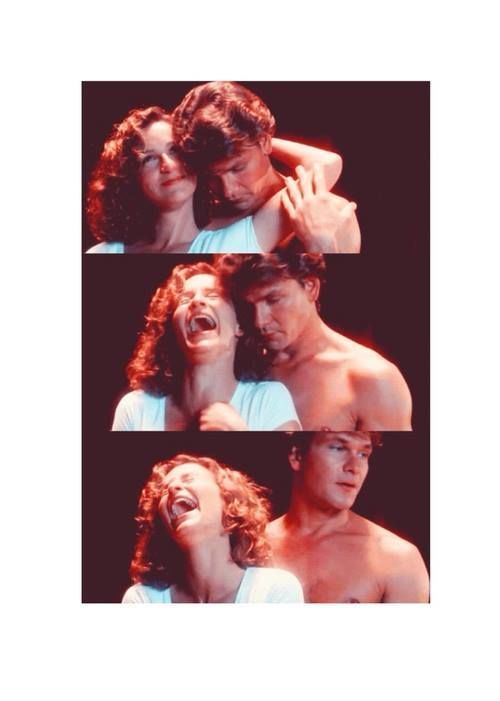 However, the owners of Clearasil demanded that all references to the abortion be removed from the painting, which was impossible to do. Bergstein made sure that abortion was the cornerstone of the narrative, without which the film crumbled like a house of cards. So the acne cream had to be abandoned.
However, the owners of Clearasil demanded that all references to the abortion be removed from the painting, which was impossible to do. Bergstein made sure that abortion was the cornerstone of the narrative, without which the film crumbled like a house of cards. So the acne cream had to be abandoned.
At the very end of the film's release, the disillusioned studio also had to endure a conflict with the MPAA, which awards film ratings. Although there was no eroticism, violence or swearing in the film, the tape initially received an “adult” R rating - solely because of the “dirty” of passionate dances. Fortunately, the studio still managed to convince the association that "vertical sex" was not real sex, and on August 21, 1987, the film was released with a PG-13 rating.
The very first week of release showed that the abundance of early negative reviews was due to the fact that the film was not being watched by those for whom it was intended. In just ten days, the tape, whose final budget was $ 6 million, earned ten million, and not due to a powerful advertising campaign, but due to numerous fans. When women and girls left the hall, they either bought a ticket again, or ran to call their friends and invite them to the cinema. Visually, narratively, emotionally, musically, it was an all-female film with no compromises for the men in the audience, and it acted like a drug on the audience. Professional reviews, however, were not too flattering, but this did not prevent the film from earning $ 170 million at the worldwide box office, becoming one of the biggest hits of the year and receiving an Oscar for best song.
When women and girls left the hall, they either bought a ticket again, or ran to call their friends and invite them to the cinema. Visually, narratively, emotionally, musically, it was an all-female film with no compromises for the men in the audience, and it acted like a drug on the audience. Professional reviews, however, were not too flattering, but this did not prevent the film from earning $ 170 million at the worldwide box office, becoming one of the biggest hits of the year and receiving an Oscar for best song.
And that was just the beginning. When Dirty Dancing was released on video, it became the first movie in history to sell over a million copies. In 1988, no cassette was as popular in American theaters as the Dancing cassette, and in subsequent years the tape sold only slightly worse, first on VHS and then on DVD. American television also fell in love with "Dancing", and they became the same frequent guest on the "blue screen" in the States, as in our country the comedies of Gaidai and Ryazanov.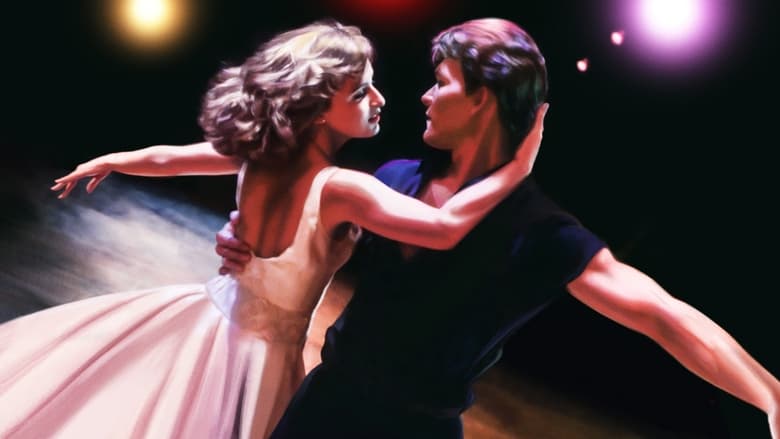 And when British broadcaster Sky Television asked female viewers in 2007 which films they preferred, Dirty Dancing came in first place, beating female hits such as Grease, Pretty Woman and The Sound of Music (in second place, by the way). , hit "Star Wars" - first place in a similar men's list).
And when British broadcaster Sky Television asked female viewers in 2007 which films they preferred, Dirty Dancing came in first place, beating female hits such as Grease, Pretty Woman and The Sound of Music (in second place, by the way). , hit "Star Wars" - first place in a similar men's list).
The movie was also lucky with quotes – the phrase “Baby can't be cornered” became one of the most popular movie phrases of the 1980s. She appeared in an early version of the script and survived all the rewriting and improvisation, despite the opposition of Patrick Swayze, who considered her too stupid and vulgar. But, like many critics of the picture, he was simply not its target audience. And over the years, he appreciated this phrase and twisted it more than once in dark jokes about the cancer that brought him to his grave. It took him a long time to appreciate what the phrase meant to American women, who, even after the official victory of feminism, are often cornered or pushed aside - especially in Hollywood, which remains a male kingdom.